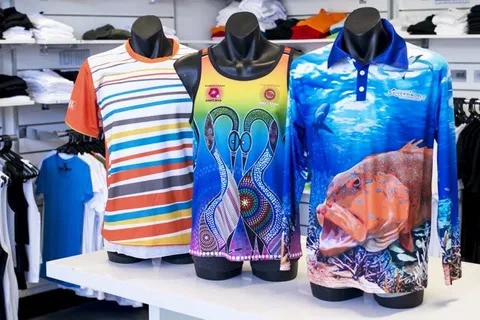In the world of custom printing, countless methods are used to create designs on apparel, accessories, and promotional products. From screen printing to heat transfer and direct-to-garment printing, each has its strengths. However, custom sublimation printing near me is often regarded as the best printing method for many applications due to its vibrant colours, long-lasting results, and unmatched versatility. Whether you’re starting a print-on-demand business or want customised apparel that stands out, sublimation printing offers a professional-quality finish that sets it apart.
What is Sublimation Printing?
Sublimation printing is a process that uses heat to transfer dye directly into the fibres of a material, most commonly polyester or polyester-coated items. Unlike traditional methods that place ink on top of the fabric, sublimation infuses the dye into the material itself. This means the print becomes part of the fabric, resulting in a smooth, durable, and vivid design.
The science behind sublimation is simple: when heat and pressure are applied, the solid dye turns into a gas without passing through a liquid state. The fibres of the fabric open up and absorb the dye, locking it in as they cool down. The result is a permanent, high-resolution print that won’t crack, peel, or fade over time.
Why Sublimation Printing is the Best Method
1. Vivid and Long-Lasting Colours
One of the biggest advantages of sublimation printing is its ability to produce rich, vibrant colours that don’t fade easily. Because the dye bonds with the fabric itself, the design retains its brightness even after multiple washes.
2. Soft and Smooth Finish
Unlike screen printing or vinyl transfers, sublimation leaves no additional layer on top of the fabric. The result is a soft, smooth shirt or product where the design feels as natural as the material itself.
3. Unlimited Design Possibilities
Sublimation printing allows for full-colour, all-over printing. This means you can cover the entire surface of a shirt, mug, or accessory with detailed graphics, gradients, and photo-quality images.
4. Durability
Since the design is embedded into the fibres, it won’t crack, peel, or wash out. This makes sublimation ideal for sportswear, uniforms, and everyday apparel that endures frequent use.
5. Eco-Friendly Advantage
Sublimation printing produces less waste compared to other printing methods. There are no screens, plates, or extra materials required, making it a more environmentally conscious option.
What Can Be Printed with Sublimation?
Sublimation isn’t limited to shirts. It’s one of the most versatile methods in the printing industry, perfect for a wide range of items:
- Apparel – T-shirts, jerseys, leggings, hoodies, and sports uniforms.
- Accessories – Tote bags, hats, scarves, and socks.
- Promotional Items – Mugs, phone cases, keychains, and coasters.
- Home Décor – Pillowcases, curtains, blankets, and wall art.
As long as the surface is polyester or coated with a polyester layer, sublimation can be applied.
How Sublimation Printing Works – Step by Step
- Design Creation – The design is prepared digitally using graphic software.
- Printing onto Transfer Paper – Special sublimation ink is printed onto transfer paper.
- Heat Transfer – The paper is placed on the product and pressed with high heat and pressure.
- Ink Infusion – The ink turns into gas and embeds itself into the fibres of the fabric.
- Final Product – A vibrant, permanent design that won’t fade or peel.
Comparing Sublimation with Other Printing Methods
- Screen Printing – Great for bulk orders and bold colours, but limited for complex designs and less durable over time.
- Heat Transfer Vinyl (HTV) – Works well for small runs, but designs sit on top of the fabric and can peel.
- Direct-to-Garment (DTG) – Produces detailed prints, but not as durable as sublimation and often limited to cotton fabrics.
- Sublimation – Best for polyester and coated materials, offering permanent, vivid designs with all-over printing capabilities.
Limitations of Sublimation Printing
While sublimation is the best method in many ways, it does have some limitations:
- Works best on polyester fabrics or coated surfaces (not natural cotton).
- Limited to light-coloured materials since the dye is transparent and doesn’t show well on dark fabrics.
- Not always cost-effective for very small runs if specialised equipment is required.
Conclusion
Sublimation printing is truly one of the best printing methods available today. Its ability to deliver vivid colours, long-lasting results, and versatile applications makes it the preferred choice for businesses, sports teams, fashion brands, and individuals alike. While it works best on polyester-based materials and lighter colours, its advantages far outweigh its limitations.
For anyone looking to create professional-quality, customised products with unmatched durability and style, sublimation printing stands out as the ultimate solution.

